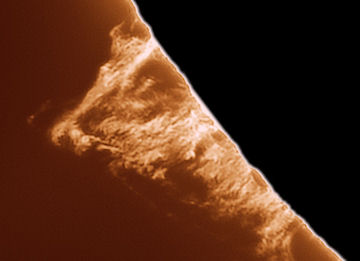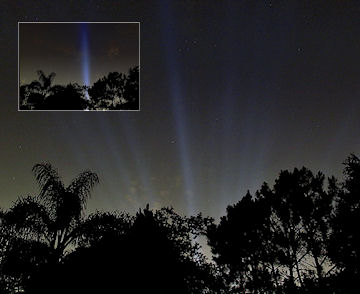NEW AND IMPROVED: Turn your iPhone or iPod Touch into a field-tested global satellite tracker. The Satellite Flybys app now works in all countries. | | | SUNSET SKY SHOW: When the sun goes down tonight, step outside and look west. Venus and the slender crescent Moon are gathering for a beautiful twilight conjunction. [sky map] SOLAR ACTIVITY: The circumference of the sun is crowded with prominences today, several of which have erupted in spectacular fashion: SOHO images. These massive events are wonderful targets for backyard solar telescopes. Pete Lawrence sends this example from his private observatory in Selsey UK: 
"June 14th is obviously prom day!" says Lawrence. "This impressive southeastern prominence looks like a wall of flame reaching out into space. If you have a solar telescope, try and get a look because it's still developing," he urges. more images: from Robert Arnold of Isle of Skye, Scotland; from P-M Hedén of Vallentuna, Sweden; from Stephen Ames of Hodgenville, KY; from Gianfranco Meregalli of Milano Italy; THE END OF ASTRONOMY IN ORLANDO: "Universal Studios is about to open a brand new Harry Potter ride in one week," reports amateur astronomer Brent from Orlando, Florida. "The new spotlight they have for it is ... Riddikulus!!" He took this picture of the night sky on June 12th with the spotlight in action: 
"The beam splits and dances over the entire sky," he laments. "I'm going to have to take up a new hobby." Brent took this picture of Comet McNaught through a brief gap in the beams. Compare that to what is possible without a spotlight. More information about the perils and problems of urban light pollution is available from the International Dark Sky Association. Also, please consider purchasing night sky-friendly lighting from Spaceweather.com supporter Starry Night Lights.
May 2010 Aurora Gallery
[previous Mays: 2008, 2005, 2004, 2003, 2002] [aurora alerts] | 
